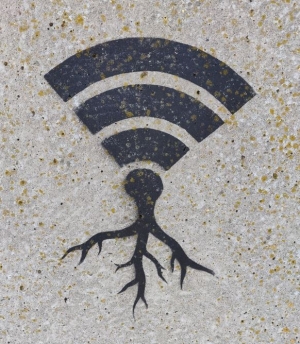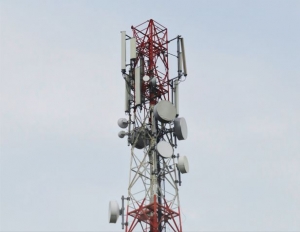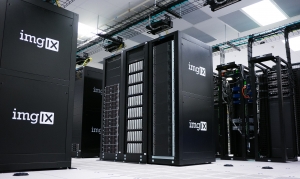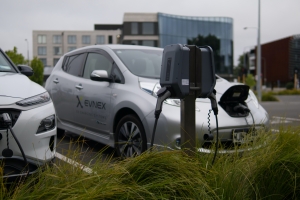Test Owner
In today's digital age, communication has undergone a transformative evolution. Technological advancements have revolutionised the way we connect with one another, rendering traditional landline phones seemingly archaic. The widespread adoption of mobile devices and internet-based communication platforms has raised questions about the future of landline phones. In this article, we explore the current landscape and discuss the phasing out of landline phones in 2025.
The Changing Communication Landscape: In recent years, there has been a noticeable decline in the use of landline phones. Mobile phones and internet-based communication tools have become the go-to choices for individuals and businesses alike. The rise of smartphones, with their enhanced functionality and portability, has led to a significant shift in consumer preferences. Additionally, internet-based platforms such as Voice over Internet Protocol (VoIP) services offer cost-effective alternatives to traditional landlines.
Factors Driving the Transition:
1. Mobile Revolution: Mobile phones have become an integral part of our lives. With the convenience of carrying a device that combines multiple functionalities, such as calling, messaging, and internet access, landline phones have lost their appeal.
2. Internet Connectivity: The advent of high-speed internet has enabled the growth of internet-based communication platforms. VoIP services, such as Skype, WhatsApp, and Zoom, allow users to make calls, send messages, and hold video conferences across the globe. These services offer a more versatile and cost-effective alternative to landlines.
3. Cost and Maintenance: Landline phone services often come with monthly line rental charges, additional fees, and long-distance call costs. On the other hand, internet-based communication platforms can offer low-cost or even free services, reducing the financial burden on users. Additionally, the maintenance and repair of landline infrastructure can be expensive for service providers.
4. Technological Advancements: The rapid advancement of technology has enabled innovative communication methods that surpass the capabilities of landline phones. Features like voice assistants, video calls, and seamless integration with other devices make mobile and internet-based communication options more appealing.
The Phasing Out of Landline Phones in 2025: The article you linked to suggests that landline phones are being phased out in 2025, marking a significant shift in our communication landscape. While landlines will not vanish overnight, it is evident that their prominence will continue to diminish. Here are a few reasons behind this transition:
1. Preference: As consumers embrace the convenience and versatility of mobile phones and internet-based communication platforms, the demand for landline services declines. Service providers are adapting to this changing preference by reallocating resources to meet the growing demand for digital communication.
2. Infrastructure Upgrades: Telecommunication companies are investing heavily in upgrading and expanding their mobile and internet infrastructure. The focus is now on providing faster and more reliable internet connections and improving mobile network coverage, further reinforcing the transition away from landline phones.
3. Environmental Impact: Phasing out landlines also has positive environmental implications. Traditional landline phones require physical copper wiring and infrastructure, which necessitates extensive mining and manufacturing processes. By embracing digital alternatives, we reduce our carbon footprint and contribute to a more sustainable future.
Conclusion: The phasing out of landline phones in 2025 signifies the inevitable progression towards a digital-centric communication landscape. Mobile phones and internet-based platforms have reshaped the way we connect, providing greater flexibility, convenience, and cost-effectiveness. While landline phones may still serve specific needs for some individuals and businesses, it is clear that their prominence will continue to wane as technology advances. As we embrace this new era of communication, it is crucial to stay informed and adapt to the evolving technological landscape.
A new report by the International Data Corporation (IDC) suggests that the Wi-Fi industry is in for a rollercoaster ride, with a surge in demand projected for 2024. The report reveals that while there was an 8.6 percent growth in Wi-Fi-enabled product shipments in 2021, there was a decline in 2022, the first in Wi-Fi's decades-long history. This decline was attributed to the pandemic-driven market changes that caused a decrease in smartphone and PC shipments. The data showed that Wi-Fi product shipments fell by 4.9 percent in 2022 to 3.8 billion products.
The report forecasts that the Wi-Fi market will remain relatively flat in 2023, with shipments of just 3.9 billion products. However, in 2024, IDC predicts a 6.4 percent growth to 4.1 billion products. The report also suggests that two-thirds of shipments in 2023 will be Wi-Fi 6 or Wi-Fi 6E, which will continue to expand into more IoT devices as more Wi-Fi 6 chipsets targeting IoT devices hit the market.
IDC's Research Director of Connectivity and Smartphone Semiconductors, Phil Solis, stated that while the decline in Wi-Fi shipments in 2022 was unprecedented, growth is on the horizon. This will be driven by more Wi-Fi 6 and 6E devices coming into play, Wi-Fi 7 chips ramping up in higher-end devices and access points, and more discrete Wi-Fi solutions in primary client devices and other product types.
The report highlights that eight Wi-Fi-enabled product types will ship over 100 million units in 2023 and will increase to 11 product types in 2027. Primary client devices such as smartphones, media tablets, and PCs are still key drivers of shipments, accounting for around 40 percent of Wi-Fi shipments in 2023. However, primary client devices' recent share loss is due to the flattening of that market coupled with the growth of IoT or endpoint devices with Wi-Fi. IDC predicts that IoT will surpass all primary client devices in 2027, reaching 37 percent of shipments in 2022 and surpassing 40 percent in 2027.
IDC's report, Worldwide Wi-Fi Technology Forecast, 2023-2027, covers the shipments of Wi-Fi-enabled products from 2005 to 2027. The data is segmented into 11 markets, over 50 product categories, and a few hundred product types. It is also segmented into primary clients, IoT/endpoints, heavy and light edge infrastructure, networking infrastructure, and storage mechanisms. Finally, everything is segmented by Wi-Fi protocols up to Wi-Fi 7.
In conclusion, while the Wi-Fi industry experienced a decline in shipments in 2022, it is expected to bounce back with a surge in demand projected for 2024. With more Wi-Fi 6 and 6E devices coming into play and Wi-Fi 7 chips ramping up in higher-end devices and access points, the future of the Wi-Fi industry looks promising.
The UK government recently launched a new Wireless Infrastructure Strategy, which aims to deliver 5G connectivity to all populated areas in the UK by 2030, as well as investing in the next generation of wireless technology. The strategy includes a comprehensive plan for 6G to ensure that the UK is at the forefront of the next generation of wireless technology.
The UK government has established a national mission, supported by up to £100m ($130m) of initial funding, to secure the UK's place in "future telecoms" and 6G technologies. Future telecoms were identified as one of the five critical technologies in the government's Science and Technology Framework to deliver growth, increase prosperity, and create better-paid jobs across the UK.
The strategy includes measures such as nationwide coverage of standalone 5G by 2030, with the government aiming to extend 4G coverage to 95% of the population. The government will also provide £40m of funding to establish eight to ten ‘5G Innovation Regions’ across the UK.
The plan includes continuing to remove practical barriers to the deployment of 5G infrastructure, confirming the government's openness to market consolidation, ensuring that net neutrality rules are fit for purpose, and reviewing and setting out a clear evidence-based and forward-looking rationale for its approach to setting spectrum fees by the end of 2023.
The government will also establish a national taskforce to encourage take-up and investment at the local level and boost public sector adoption of 5G and other advanced wireless connectivity. This will ensure that new hospitals have access to 5G or similar advanced wireless connectivity to support major improvements in healthcare delivery.
The government aims to establish a clear strategy for influencing the development of 6G to maintain its role as a science superpower. It will launch an £8m fund to provide capital grants to further promote new satellite connectivity to the most remote 35,000 premises. Funding for early-stage research will be coordinated through UK Research and Innovation and the Engineering and Physical Sciences Research Council via the Technology Missions Fund.
The Wireless Infrastructure Strategy is also committed to improving rural connectivity. The government has launched an £8 million fund to promote satellite connectivity to the most remote areas in the country. The aim is to provide improved broadband to the 35,000 premises that are hardest to reach.
Project Gigabit is a £5 billion initiative to provide future-proof broadband to rural areas. £1 billion has already been allocated to the project. £1 billion has also been invested in the Shared Rural Network to provide 4G coverage to 95% of the UK landmass.
Ofcom has been asked to improve mobile coverage reporting, including in rural areas, and to improve access to spectrum for rural network providers. A ‘Rural Connectivity Champion’ will also be appointed to support the adoption of advanced wireless connectivity and promote innovation in industries like agriculture.
The Wireless Infrastructure Strategy aims to future-proof and provide resilient connectivity to over 99% of the UK by 2030. However, the government acknowledges there will still be some areas – around 100,000 premises – where gigabit will not be possible. The government is committed to providing improved connectivity to these areas and ensuring that rural communities have access to the connectivity they need to drive economic growth.
The Wireless Infrastructure Strategy is expected to create more job opportunities, particularly in the technology sector. The strategy's focus on future telecoms and 6G technologies will encourage more investment in research and development, leading to the creation of new and innovative products and services. The establishment of 5G Innovation Regions across the UK will also create job opportunities in the areas of research, development, and implementation of new technologies. Overall, the Wireless Infrastructure Strategy will play a critical role in boosting economic growth and creating better-paid jobs across the UK.
Managing Energy Efficiency in Data Centres
Data centres are essential for running machines and keeping them cool, but they consume vast amounts of electricity. According to the International Energy Agency, data storage and transmission are estimated to take up 1% of the world's electricity. Despite the increase in the number of internet users and global internet traffic, this percentage has remained unchanged since 2010. While colocation centres make up the majority of data centres, hyperscale data centres owned by tech companies are in the spotlight.
Data centre construction is now geared towards modularity, with Huawei's FusionPower6000 3.0, which provides power supply and distribution solutions, leading the way. This fully modular solution shortens construction time and improves O&M efficiency, reducing the physical footprint by over 30%. Additionally, power link efficiency reaches 95.5% to supply power in an environmentally-friendly way.
Hyperscale data centres are much larger and more efficient than enterprise data centres, with economies of scale making them more energy-efficient. There are well over seven million data centres worldwide, with the US owning over 2,670. However, it is challenging to estimate how much electricity data centres consume as data centres can range from a cloud hyper scaler of 50MW to a small server room of 50kW. Climate Change Agreement for Data Centres 4th Period estimates that data centres’ energy consumption in the UK was 3.8TWh, or around 1% of the country's total electricity consumption.
In conclusion, data centres’ energy consumption is vast, and there is an increasing demand for energy-efficient solutions. Modular and mobile data centres, including Huawei's FusionPower6000 3.0, offer a promising solution that can provide flexibility and scalability, reduce construction time, improve efficiency and maintenance, and reduce the physical footprint while supplying power in an environmentally-friendly way. As data centres’ energy consumption continues to increase, it is essential to find innovative solutions to power them efficiently and sustainably.
Virgin Media O2 (VMO2) is said to be exploring a potential acquisition of Cityfibre, a challenger broadband provider, in a deal that could be worth up to £3 billion. Talks have already begun between Liberty Global CEO, Mike Fries, and Cityfibre CEO, Greg Mesch. Cityfibre is one of the largest “alt net” broadband providers in the UK, with its full fibre broadband reaching approximately 2 million homes. By 2025, the company aims to have reached 8 million properties.
If the acquisition goes ahead, VMO2 would expand its network, meeting its target of upgrading its entire network to full fibre, with around 50% of Cityfibre’s network overlapping with its own. The purchase would allow VMO2 to compete more effectively with BT’s Openreach network. However, the acquisition is likely to be subject to scrutiny from competition regulators due to the significant overlap between the two companies’ networks.
Goldman Sachs-backed Cityfibre could command a price tag of over £3 billion. The company raised £4.9 billion in debt financing last year and has a strong market position, having provided services to telecoms providers such as Vodafone and TalkTalk. Despite this, the company announced plans last month to cut up to 400 jobs, equivalent to a fifth of its workforce, to reduce costs. Cityfibre also incurred losses of almost £50 million in 2021.
Industry experts have questioned VMO2’s negotiating position. James Barford, Head of Telecoms Research at Enders Analysis, believes Cityfibre’s scale makes it attractive to VMO2 but warned of the regulatory hurdles that may arise from such an acquisition. On the other hand, John Karidis, a telecoms analyst at Numis, believes that VMO2 may be negotiating from a position of weakness due to the fact that much of its existing broadband network is cable, not full fibre, and Liberty Global's nearly 25% decline in share price over the past year.
Cityfibre and other alternative network (alt net) providers have expressed concerns about planned wholesale price cuts that would undercut them by locking customers into longer deals, raising fears of their viability as a business model. In response, Ofcom has extended its investigation into the price plan, known as Equinox II, following a backlash over comments made by BT CEO Philip Jansen.
Neither VMO2 nor Cityfibre have commented on the potential acquisition.
Green data centre used to heat swimming pool
A startup called Deep Green has found a unique use for the heat generated by its washing-machine-sized data centres: heating a public swimming pool in Devon. The computers inside the data centre are surrounded by oil that captures the heat, which is then used to warm the pool water via a heat exchanger. This method has been successful in heating the pool to around 30C for 60% of the time, saving the Exmouth Leisure Centre thousands of pounds. The data centre is provided to the council-run centre free of charge, and Deep Green has even agreed to refund the leisure centre's electricity costs for running the "digital boiler." Seven other England-based pools have signed up for the scheme. Despite concerns about the energy usage of data centres, Deep Green's innovative approach proves that these centres can be used for good, as they generate a lot of heat, which can be harnessed for other purposes.
Ban on new petrol & diesel cars
Boris has recently announced that new vehicles powered by petrol and diesel will not be sold in the UK from 2030.
How will this affect the job market?
- The government hopes to create over 250,000 jobs; mainly in the nuclear & offshore wind farm industries
- More jobs will be created due to the massive investment in Electric Vehicle (EV) charging points - A planned £1.3bn investment focusing on free residential installation and large roll outs on public charging points. Consequently, there is going to be a high demand for Electric Vehicle Charging Point Installers.
Here at Bauhaus, we supply electricians, project managers, project control engineers and many more professions that are involved in the installation of EV charging points. Bauhaus would be interested in hearing from anyone interested in this work. Please call 0161-923-9050 or email enquiries@bauhausrecruitment.com
Nokia seal the BT contract to phase out Huawei’s kit.
With Huawei being blocked from the UK’s 5G networks, Nokia are now set to take over!
The contract entails installing additional base stations and antennas to enable EE customers’ devices make calls and transmit data via the UK firm’s 5G network.
What does this mean for 5g?
BT are currently using Huawei equipment on two thirds of its 4G sites. As a consequence, there is going to be a large decommissioning job not to mention replacing the equipment. This may result in the UK being months if not years behind the rest of Europe for mobile coverage.
On the plus side there will be a substantial amount of work for engineers. At Bauhaus we supply staff into these areas so if you are looking for work please do get in touch.
A Glimmer of Hope for IR35 Reforms?
In a matter of weeks, Coronavirus has reshaped everything we thought we knew to be true. To offset the destruction caused to the economy by the virus, the government has now announced a £330bn financial package, in a bid to aid businesses and individuals. This includes a business rate holiday, furloughing, emergency loans for companies and financial assistance to airlines.
Significant for IT contractors is the treasury decision to delay IR35 tax reforms. Steve Barclay, Chief Secretary to the Treasury, was keen to stress that “this is a deferral, not a cancellation” further stating that the government is “committed” to implementing this policy next year. However, another 12 months without IR35 will no doubt offer some relief to PSCs in trying times.
Sceptics of the policy had previously declared it "no-rights employment” as contractors found within IR35 could be expected to pay more tax than initially forecasted, without receiving full-time employee benefits. For companies employing PSCs, the delay will alleviate fears of increased wage bills and losing contractors to competitors. Looking ahead, companies would be prudent to use time allowed by the delay to assess fully where their PSCs fall in the scope of IR35. This could stop blanket bans being imposed by companies for fear of a tax bill, should their contractors fall in the scope of IR35. Andy Chamberlain, Director of Policy at IPSE, seconded the Government, noting that “it is right and responsible to delay the changes to IR35 for at least a year during the Coronavirus crisis, to reduce the strain and income loss for self-employed businesses.”
Full fibre- the life force Britain needs right now
Whilst lockdown restrictions are being lifted across the UK, the economic fallout of the health crisis remains. When newly elected Prime Minister, Boris enthusiastically promised “fantastic full fibre broadband” by 2025. His goal was to “unite our country and society”. As we decipher what the 'new normal' really means the future, this government pledge has never been so urgent. Are digital services key in resuscitating the economy?
Commercially as well as socially, the internet took on new meanings during the peak of Covid-19. In fact, many brits have posed the question- is working from home now the legacy of lockdown? With millions doing it like never before, including education sectors and health services, we have seen the internet become intrinsic to every generation across every industry.
In short, efficient connectivity is vital in a post Covid-19 landscape, for both society and the economy. For Britain, the overriding issue with this is that most of the UK are still reliant on copper based networks, therefore susceptible to unreliable and flagging connections. Furthermore, for those rural regions of the UK still left in the digital dark age, this presents huge areas of missed economic opportunity.
Greg Mesch, Chief Executive for CityFibre, plans to “accelerate our full fibre rollouts to eight million homes across the country” to provide “fit for purpose” digital connectivity to all. This will be essential for Britain's present economic recovery as well as securing a seat at the table globally.












